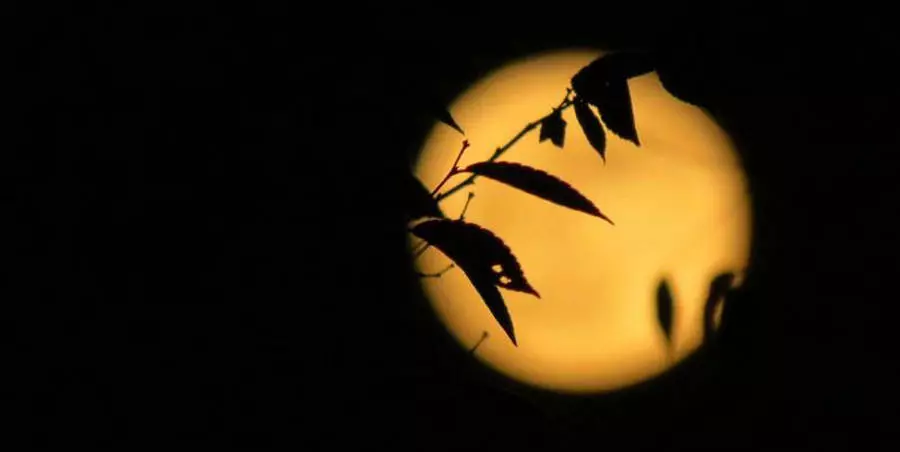
Ludwig van Beethoven, one of the greatest musicians in the history of music, his music collection of classical music, while opening up the path of music in the Romantic period, can be said to be a bridge between the classical music school and the Romantic music school, which played a pivotal role in the development of world music. Among them, 32 piano sonatas are the most classic, which is called "the peak of piano art history", and of these 32 sonatas, "Moonlight" is the most famous piano sonata in C minor.
Almost no famous song is as famous as this sonata, which is famous and well-known because of the common name "Moonlight". The origin of the name "Moonlight" varies, but most of all are derived from the German poet Ludwig Raelstab (1799-1860) describing the first movement of the piece as "like a swaying boat on the moonlit lake of Lake Lucerne, Switzerland". Beethoven was not actually the title of the song, the original title of the work was "Sonata Similar to Fantasia", which was dedicated to his lover at the time (beethoven was 31 years old at the time). Beethoven never married, and he always retreated when there was a slight sign of love, mostly because he was in contact with aristocratic families, and he was mostly obsessed with girls from aristocratic families.
Video loading...
"Moonlight Sonata" contains Beethoven's deepest feelings, composed by the heart and soul of deaf musicians. The tone of the piano gently pushes slowly, like the moonlight pouring on the ground, slowly moving to the atrium, illuminating those corners that have not been touched for a long time, evoking memories.
No.1
First Movement - Continuous Slow Plate, 2/2 beat in C minor, trilogy.
The tonality of the minor key determines the color of the first movement, the fantasy, the tender inner feelings, the sad chanting, and sometimes the gloomy premonitions. The first 4 bars of the music are the introduction to the movement, and on the basis of the slowly descending bass support, a faint sound begins to pop out in a continuous triplet rhythm, like a bright moon slowly rising, although full of hope, but it seems to be covered by dark clouds, and sorrow comes from it. Soon the theme appeared in #F minor, which was a new stage. The elements of the will are strengthened, and the feelings become stronger and stronger. The continuous bass of the bass #G octave throughout the passage leads to the reproduction department in #C minor, which indicates the stability of the mood at the beginning of the movement, so that Beethoven, in the first movement Adagio, adds a series of color changes to the main mood, the alternation of harmonic colors, the contrast of the vocal areas, the rhythmic contraction and expansion, all the color changes are more obvious.
No.2
Second Movement - Allegro, D-down major, 3/4 beats, trilogy.
The movement is a small allegro. Belonging to the transitional movement, the musical image is gentle and light, diluting the mood of contemplation and groaning in the first movement, at a small step dance speed, the bright and gentle tone is very different from the dark tone of the first movement and the sad and intense nature of the third movement, it incorporates the lively and witty nature of the small step dance, Liszt described the movement as "a small flower between the deep valleys on both sides". The two musical themes of the movement seem to soothe the hearts of the wounded, with the A-section being the theme of the legato and the broken, which are then repeated in variations. The B segment remains in the lower D key, followed by a re-enactment that partially ends the song. In summary, the entire movement is a transition from a slow, contemplative first movement to a stormy finale as part of the stage of musical development.
No.3
Third Movement - Agitated Rapids, C Minor, 4/4 Beats, Sonata.
The finale unfolds like a tidal wave, with a continuous wave of arpeggios and a powerful accent and spin at the end of the sentence, making the entire first theme extremely excited. The agitated allegro makes the notes like a storm, melts into Beethoven's appeal and struggle against fate, and expresses Beethoven's clear attitude towards the challenge of the feudal hierarchy to the end. The main theme and the sub-theme of the movement are written in the opposite way, but both have a passionate and unrestrained nature, and the main theme feels like a fierce and upward excitement, and also shows the will to move forward like a storm throughout the whole song. The sub-theme can hardly see the fierce emotion in the whole unfolding part, but instead the melodic and firm tone, feeling full of longing and hope for faith, and the determination to fight with it to the end in the face of cruel fate. In the reproduction department, the sub-themes are intertwined, contrasted, developed, reproduced, etc., making the composer's state of mind like the waves of the sea difficult to calm the question without going through the transposition part and immediately connecting with the main theme until the final ending. At the end, the reappearance of the first theme shows the irrepressibility and enduring immutable passion. In the passage sentences of the ascending and dwelling 32-part notes on the hem, the advance of passion is reflected.